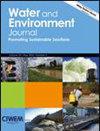机器学习建模在污水处理厂能源和排放优化方面的进展:系统回顾
IF 1.8
4区 环境科学与生态学
Q4 ENVIRONMENTAL SCIENCES
引用次数: 0
摘要
污水处理厂(WWTP)是高能耗和主要的温室气体(GHG)排放源。本综述全面概述了当前利用机器学习(ML)优化污水处理厂能源使用和减少排放的全球情况。它汇编并分析了一百多项研究的结果,这些研究主要是在过去十年间进行的。这些研究分为五个主要领域:能耗 (EC)、曝气能耗 (AE)、泵能耗 (PE)、污泥处理能耗 (STE) 和温室气体 (GHG)。此外,这些研究还根据学习类型、应用规模、地理位置、年份、性能指标、软件等进行了进一步分类。其中,ANN 最为流行,紧随其后的是 FL 和 RF。而 GA 和 PSO 则是最主要的元启发式方法。尽管复杂性不断增加,研究人员还是倾向于采用混合模型来提高性能。据报道,能源消耗或温室气体排放量的减少幅度各不相同,分别在 0-10%、10-20% 和 20% 的范围内。本文章由计算机程序翻译,如有差异,请以英文原文为准。
Advancements in machine learning modelling for energy and emissions optimization in wastewater treatment plants: A systematic review
Wastewater treatment plants (WWTPs) are high‐energy consumers and major Greenhouse Gas (GHG) emitters. This review offers a comprehensive global overview of the current utilization of machine learning (ML) to optimize energy usage and reduce emissions in WWTPs. It compiles and analyses findings from over a hundred studies primarily conducted within the last decade. These studies are organized into five primary areas: energy consumption (EC), aeration energy (AE), pumping energy (PE), sludge treatment energy (STE) and greenhouse gas (GHG). Additionally, they are further categorized based on learning type, the scale of application, geographic location, year, performance metrics, software, etc. ANNs emerged as the most prevalent, closely trailed by FL and RF. While GA and PSO are the predominant metaheuristic approaches. Despite increasing complexity, researchers are inclined towards employing hybrid models to enhance performance. Reported reductions in energy consumption or GHG emissions spanned various ranges, falling within the 0–10%, 10–20% and >20% brackets.
求助全文
通过发布文献求助,成功后即可免费获取论文全文。
去求助
来源期刊

Water and Environment Journal
环境科学-湖沼学
CiteScore
4.80
自引率
0.00%
发文量
67
审稿时长
18-36 weeks
期刊介绍:
Water and Environment Journal is an internationally recognised peer reviewed Journal for the dissemination of innovations and solutions focussed on enhancing water management best practice. Water and Environment Journal is available to over 12,000 institutions with a further 7,000 copies physically distributed to the Chartered Institution of Water and Environmental Management (CIWEM) membership, comprised of environment sector professionals based across the value chain (utilities, consultancy, technology suppliers, regulators, government and NGOs). As such, the journal provides a conduit between academics and practitioners. We therefore particularly encourage contributions focussed at the interface between academia and industry, which deliver industrially impactful applied research underpinned by scientific evidence. We are keen to attract papers on a broad range of subjects including:
-Water and wastewater treatment for agricultural, municipal and industrial applications
-Sludge treatment including processing, storage and management
-Water recycling
-Urban and stormwater management
-Integrated water management strategies
-Water infrastructure and distribution
-Climate change mitigation including management of impacts on agriculture, urban areas and infrastructure
 求助内容:
求助内容: 应助结果提醒方式:
应助结果提醒方式:


